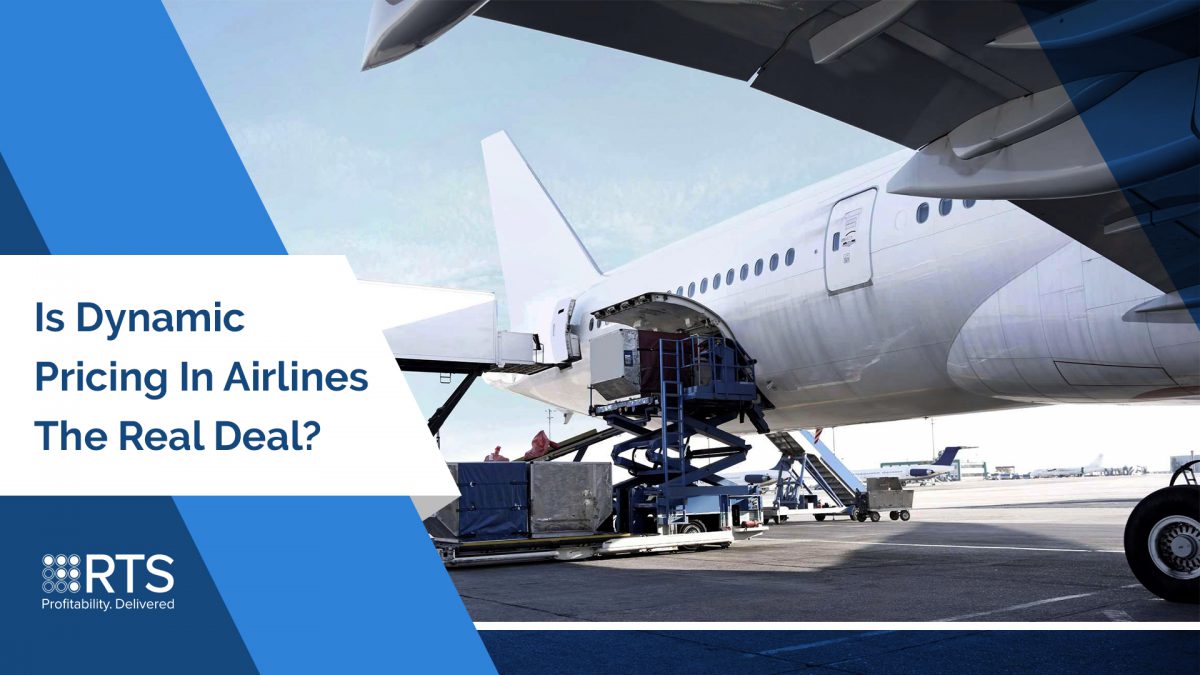Every few years, there is a new fad in our air cargo industry and by default, you can expand that to the whole of the airline industry as well. To jog our reader’s memory lane, it was revenue management 20 years ago. It was origin-destination– based revenue management in the 2010s, it was pricing in the 2015s, and its dynamic pricing now.
Is dynamic pricing in airlines the real deal? We think so. Air cargo is moving forward at a frantic pace in this area. This is augmented by the fact that we live in a somewhat capacity-y constrained environment due to the pandemic.
How does one differentiate between pricing and dynamic pricing or where does revenue management and pricing merge? Pricing is generally defined as the value of space at a given point in time in the air cargo industry. The term bid prices are synonymously used in the same context. Typically, revenue management solutions produce bid prices by mapping demand to capacity. RTS’ Velocity essentially does the same. It uses the solution’s origin-destination– based demand forecasting and then maps it to its own capacity forecasting which in turn is sent to the optimization engine to produce bid prices. These bid prices are then used to evaluate each booking request offering upselling and cross-selling options (products and routes). The key difference with dynamic pricing is that the concept of willingness to pay along with key pricing influencers is used to determine pricing at a given point in time. In order for dynamic pricing to work, one has to marry the concepts of revenue management and pricing solutions. One without the other will be equivalent to a leg missing in a chair.
What is Willingness to Pay?
Willingness to pay is the maximum price a customer is willing to pay for a product or service. It i’s typically represented by a single quote of a dollar figure or, in some cases, a price range. While potential customers are likely willing to pay less than this threshold, it i’s important to understand that, in most cases, they won’t pay a higher price.
Willingness to pay can vary significantly from customer to customer. This variance is often caused by differences in the customer dataset, typically classified as either extrinsic or intrinsic.
As a real-life example, the willingness to pay for a last-minute business trip in North America is different from someone in Asia.
It’s important to note that your customers’ willingness to pay a certain price for your product or service isn’t static. In addition to extrinsic and intrinsic differences, numerous factors can cause a customer’s willingness to pay to rise or fall.
Price isn’t the only feature that matters to customers. For example, service, how it looks, packaging, and brand name might matter as well. In the air cargo industry, speed and connectivity are the two most important differentiators in determining willingness to pay.
When a customer has an urgent need that your product or service can address, they may be willing to pay a higher price than when their need is less urgent. Similarly, an actual or perceived lack of supply could make them more willing to pay a higher price than when there’s a surplus.
Conversely, a customer’s willingness to pay may fall due to the emergence of a new competitor with stronger brand recognition or the perception that your product or service is outdated. This is especially true in the tech space.
Defining Dynamic Pricing
Simply put, dynamic pricing is a strategy in which product prices continuously adjust, sometimes in a matter of minutes, in response to real-time supply and demand. For example, Amazon is one of the largest retailers to have adopted dynamic pricing and updates prices every 10 minutes (Amazon effect by Nikolai Savin).
RTS’ AcceleRate solution is the first of its kind to develop for air cargo. The solution has been implemented at various airlines across the world and the value proposition was determined to be around 4 – 6%.
Advantages of Dynamic Pricing
- Flexibility – Airlines can quickly react to the market conditions
- Controllability – With the help of a solution like AcceleRate, one can control the prices of every shipment at a lane/customer level
- Manageability – Centralized or decentralized pricing organizations can control pricing across the airline network with the same pricing or different pricing principles
- Profit – Maximization of profits
Challenges of Dynamic Pricing in Airlines
- Learning Curve – The pricing team needs to spend some time understanding the price influencers and the algorithms behind the concepts
- Customer communication – Communication is required with customers as they may be confused with the constant change in prices. Most of us in the real world are used to airlines changing prices on the passenger side but when it comes to cargo, there is some resistance a lot of thought leaders who are RTS customers have already been successful in implementing these concepts.
If you would like to more about how dynamic pricing has worked at air cargo departments or if you think otherwise, please drop a comment in the comment section or drop us an email with your questions here RTS.Information@RTSCorp.Com
